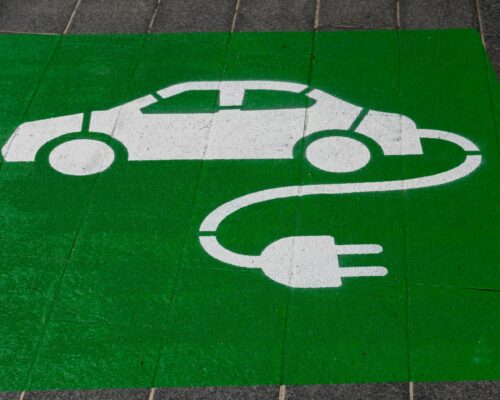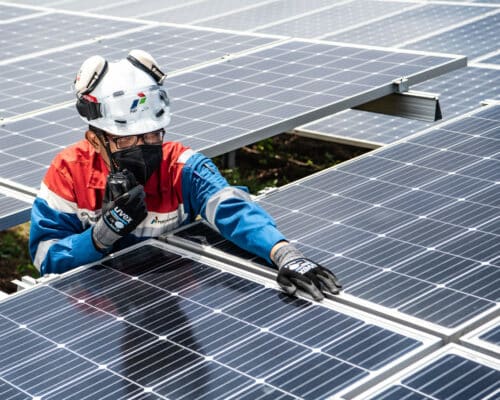Global LNG Outlook 2023: Is There a Future for LNG?
Vytautas Kielaitis / Shutterstock.com
06 March 2023 – by Tim Daiss
LNG Outlook 2023 and Global LNG Demand Forecast
A newly released Global LNG Outlook by the Institute for Energy Economics and Financial Analysis (IEEFA) projects that global liquefied natural gas (LNG) supplies will remain tight through 2025. Global LNG outlook for 2023 can remain strong but LNG demand growth will eventually decline, but not until 2030 – when Europe’s decarbonisation and energy security policies take effect. It’s not a good sign for the global LNG industry.
Methane-intensive Liquefied Natural Gas
Experts state that LNG supply will remain tight for several years. However, a wave of new LNG export capacity is also coming online later in the decade. As such, the world is still far from weaning itself off methane-intensive LNG.
These new LNG projects will create more greenhouse gas emissions (GHG) while jeopardising gas-intensive countries’ net-zero emissions goals. Additionally, it locks in LNG as a source for power production, conceivably for decades to come.
Notably, gas presents methane leakage problems across its entire value chain. When used for power production, natural gas emits at least half the carbon emissions as coal – the dirtiest burning fossil fuel.
Misplaced Decarbonisation Plans
These developments will also negatively impact members of the Association of Southeast Asian Nations (ASEAN), particularly Thailand, the Philippines and Vietnam. The Philippines and Vietnam have largely pegged a lot of their decarbonisation hopes on a pivot from carbon-intensive coal to gas usage.
The Philippines has just given the green light to its seventh LNG imports facility. Meanwhile, Vietnam will become the ASEAN’s second-largest LNG importer after Thailand.
To its credit, Vietnam is the leading ASEAN member in solar development. However, overall renewables account for only 16% of its power generation. These include small hydropower, solar, wind and biomass.
Global LNG Market Distortions Remain
The IEEFA report adds that “Southeast Asian [LNG] buyers face challenges from high global LNG prices and infrastructure constraints”. It states, “Long-term LNG contracts with deliveries starting before 2026 are reportedly sold out globally, forcing Southeast Asian countries into expensive spot markets.”
The IEEFA sees this as potentially curbing the region’s liquefied natural gas demand growth in the long term. However, ASEAN members are even at more risk from the plethora of gas-to-power projects in the region.
The Gas-to-power Dilemma of ASEAN Countries
Much capital is already invested in Southeast Asia’s relatively young gas-fired power infrastructure, with more investment expected to follow.
Overall, ASEAN power generation is forecast to increase 3.3 times from 1,041 Terawatt-hours (TWh) in 2017 to 3,439 TWh in 2050, with gas predicted to be the dominant fuel. By 2050, the share of gas in power generation will expand to 46%, much higher than coal-fired power generation (36%).
Indonesia, Malaysia, the Philippines, Thailand and Vietnam are expected to lead the 10-member ASEAN group in natural gas usage for power generation.
Cautionary Lessons from Europe
Gas-to-power is fraught with even more problems. The fate of European Union (EU) clean spark spreads is a “cautionary tale for Asia,” a Transition Zero report finds. It states that baseload gas-fired power generation is considered uneconomic in wealthy Western economies. However, if this is the case, how can developing or middle-income countries afford a gas-based transition?
Wholesale EU natural gas prices collapsed at the end of 2022. And it has made gas-fired power generation profitable in Europe for the first time in months. However, the report states that the economics of gas power plants remain “extremely challenged”. It adds that the economics of renewables are “much more compelling”.
Europe’s gas-to-power dilemma should give Southeast Asia even more pause over its reliance on existing and proposed gas-to-power projects.
As energy prices spiked last year, gas-to-power projects became unprofitable. The projects used more coal, creating the worst-case scenario for Europe’s decarbonisation goals.
European GHG emissions reached 854 million tonnes of CO2 equivalent in the third quarter of 2022 – a 2% increase compared to the previous year’s period. Given that colder temperatures and more gas usage ensued in the fourth quarter of that year, those emissions levels would likely have increased.
Thai Energy Headwinds
Thailand, the ASEAN’s largest LNG importer, faced the same dilemma last year. A surge in LNG and gas prices toward the end of 2022 forced the country to switch back to coal-fired power generation – reversing its earlier plans to wean itself off coal.
In 2022, Thailand’s energy minister Prasit Siritiprussamee said, “The price of LNG is increasing rapidly, and we are trying to cope with this by finding (other) options.”
Thailand is a net oil and gas importer. In 2021, the country relied on imports for around 75% of its electricity, crude oil and gas needs.
Thailand’s renewables sector only comprises 14.9% of its energy mix.
The Future of LNG and Energy Economics
With a myriad of problems from LNG and gas-to-power usage, energy economics simply dictate that renewables development is the best path for Southeast Asia. Renewable power is already cost-competitive and, in many cases, cheaper than LNG and gas-to-power development.
A World Economic Forum report finds that renewables were the world’s cheapest energy source in 2020. It also found that the cost of large-scale solar projects had fallen by 85% in a decade.
Of the wind, solar and other renewables that came on stream in 2020, nearly two-thirds, some 62%, were less expensive than the cheapest fossil fuels, according to the International Renewable Energy Agency (IRENA).
by Tim Daiss
Tim has been working in energy markets in the Asia-Pacific region for more than ten years. He was trained as an LNG and oil markets analyst and writer then switched to working in sustainable energy, including solar and wind power project financing and due diligence. He’s performed regulatory, geopolitical and market due diligence for energy projects in Vietnam, Thailand and Indonesia. He’s also worked as a consultant/advisor for US, UK and Singapore-based energy consultancies including Wood Mackenzie, Enerdata, S&P Global, KBR, Critical Resource, and others. He is the Chief Marketing Officer (CMO) for US-based lithium-sulfur EV battery start-up Bemp Research Corp.
Read more




